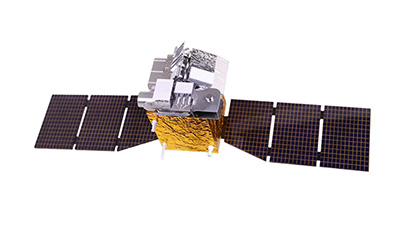About TanSat

The TanSat mission is one of the Earth Observation projects managed by the Ministry of Science and Technology of China. The principal goal of this project is to detect and monitor carbon dioxide (CO2) in the atmosphere.
The primary research goal of the TanSat mission is to monitor the variation of CO2 on a seasonal scale, but the mission is also improving knowledge of the distribution of CO2 on a global scale, understanding how it contributes to climate change.
The satellite hosts two instruments:
- ACGS (Atmospheric Carbon-dioxide Grating Spectrometer), dedicated to measurements of the near-infrared absorption by CO2
- CAPI (Cloud Aerosol Polarization Imager), devoted to studying cloud and aerosols in high-resolution. Data from the instrument can be used to compensate for errors in the measurement of CO2.
| Date of launch | 03:22 on 22 December 2016 (GMT+8) |
| Mission Status | Operational (extended) |
| Orbit Height | 700 km |
| Orbit Type | Sun-synchronous |
| Orbit Period | 90 minutes |
| Orbit Repeat Cycle | 16 days |
| Inclination | 98.2° |
| Onboard sensors provided under TPM | CAPI, ACGS |
TanSat Objectives
The main objective of the TanSat mission is to retrieve and monitor the atmosphere column-averaged CO2 dry air mole fraction (XCO2) with precisions of 1% (4 ppm) on national and global scales.
TanSat Instruments
The TanSat satellite carries two instruments: ACGS (Atmospheric Carbon-dioxide Grating Spectrometer), and CAPI (Cloud Aerosol Polarization Imager), both dedicated to global CO2 detection and monitoring.
The instruments can observe in three acquisition modes, with the same data sampling rate: nadir, ocean glint and surface target.
| Number of Channels | 2000 |
| Observation Mode | Nadir, glint, target |
| Swath | 20 km |
| Spatial Resolution | 3 km along track, 2 km cross track |
| Bands (spectral range) | 758-776 nm, 1594-1624 nm, 2041-2081 nm |
| Number of Channels | 5 |
| Observation Mode | Nadir, glint, target |
| Swath | 375 km |
| Bands (central wavelength) | 380 nm, 670 nm, 870 nm, 1375 nm, 1640 nm |
| Spatial Resolution | 250 m (at 380, 670, 870 nm), 1000 m (at 1375, 1640 nm) |
| Polarization angles | 0°, 60°, 120°, at 670 nm and 1640 nm |
The TanSat mission also performs a regular calibration, in four different modes: dark current, lamp, solar viewing for spectral and radiometric calibration; moreover, for the radiometric calibration, CAPI instrument uses lunar viewing.
Data
DATA COLLECTIONS
ESA offers registered users access through the dedicated FTP server to the following data collection:

